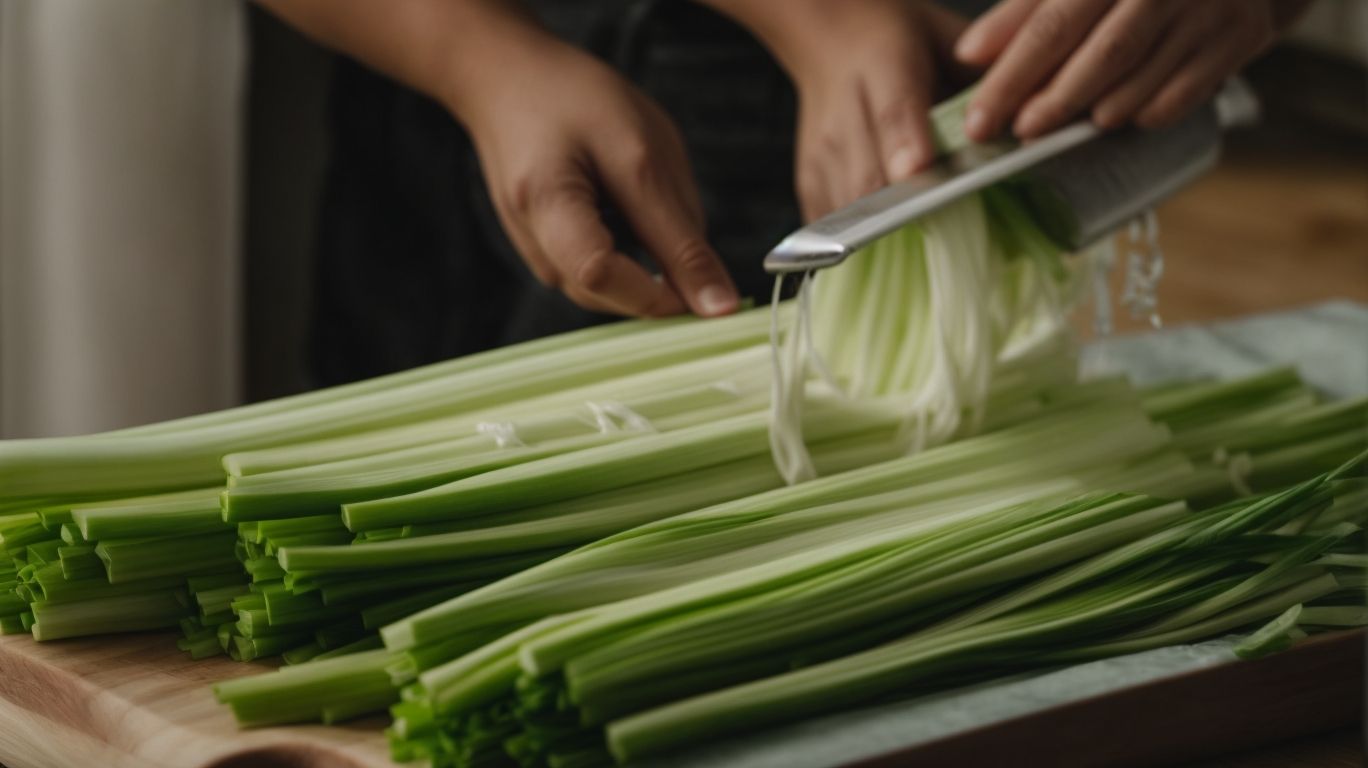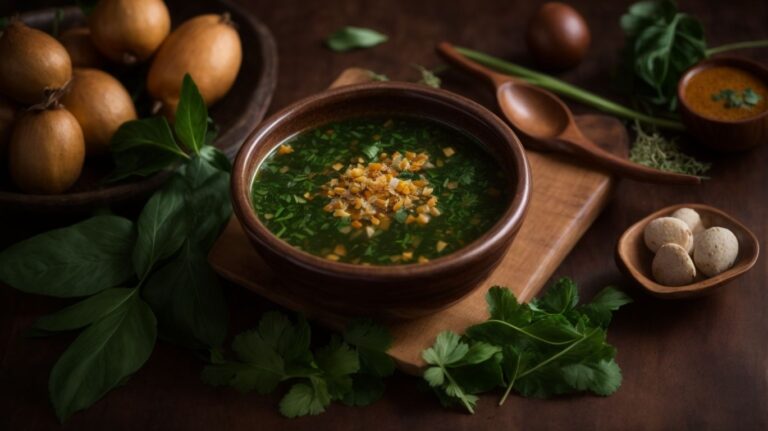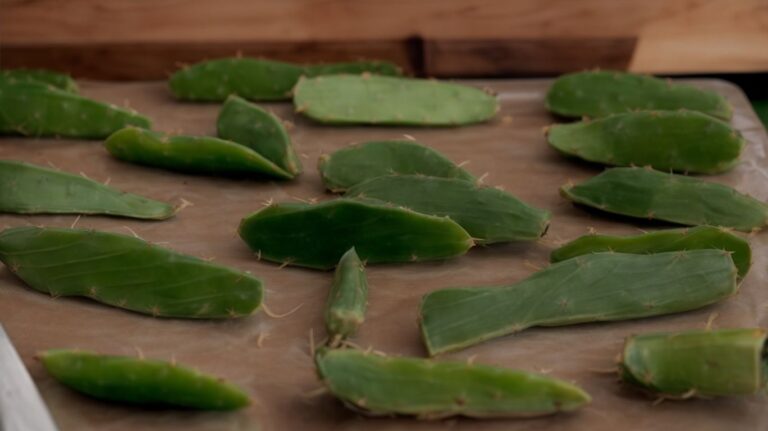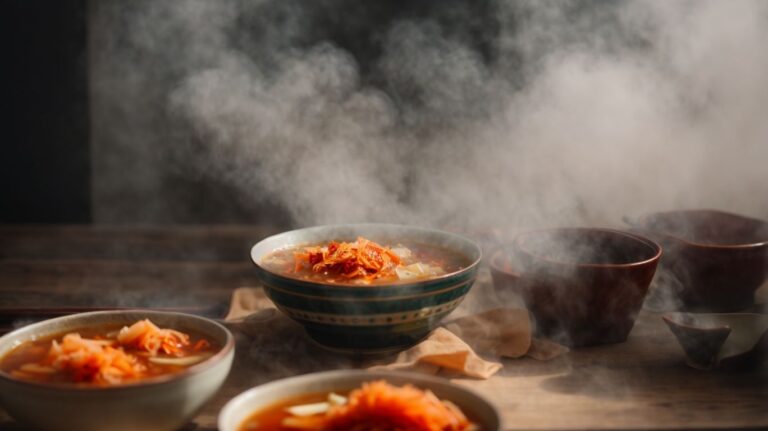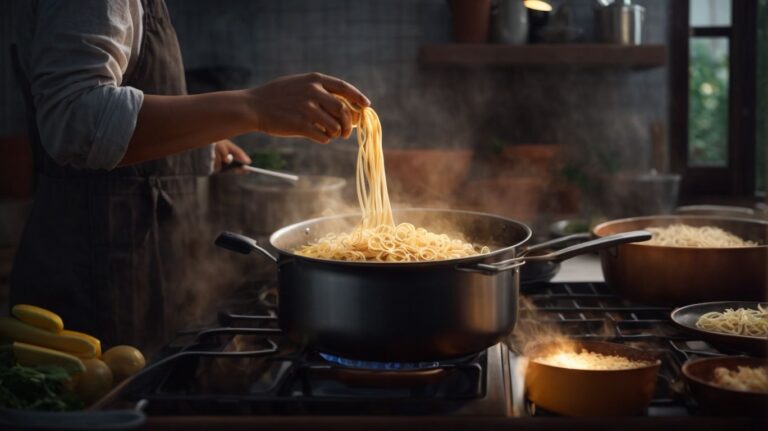How to Cook Leeks?
Are you looking to add a flavorful and nutritious vegetable to your cooking repertoire? Look no further than leeks!
In this article, we will explore everything you need to know about leeks – from their nutritional value to how to select and store them properly.
We will also share tips on how to clean, cut, and cook leeks, along with delicious recipes to try.
Whether you’re a seasoned chef or a novice in the kitchen, this article will help you master the art of cooking with leeks.
So, let’s get started!
Key Takeaways:
What are Leeks?
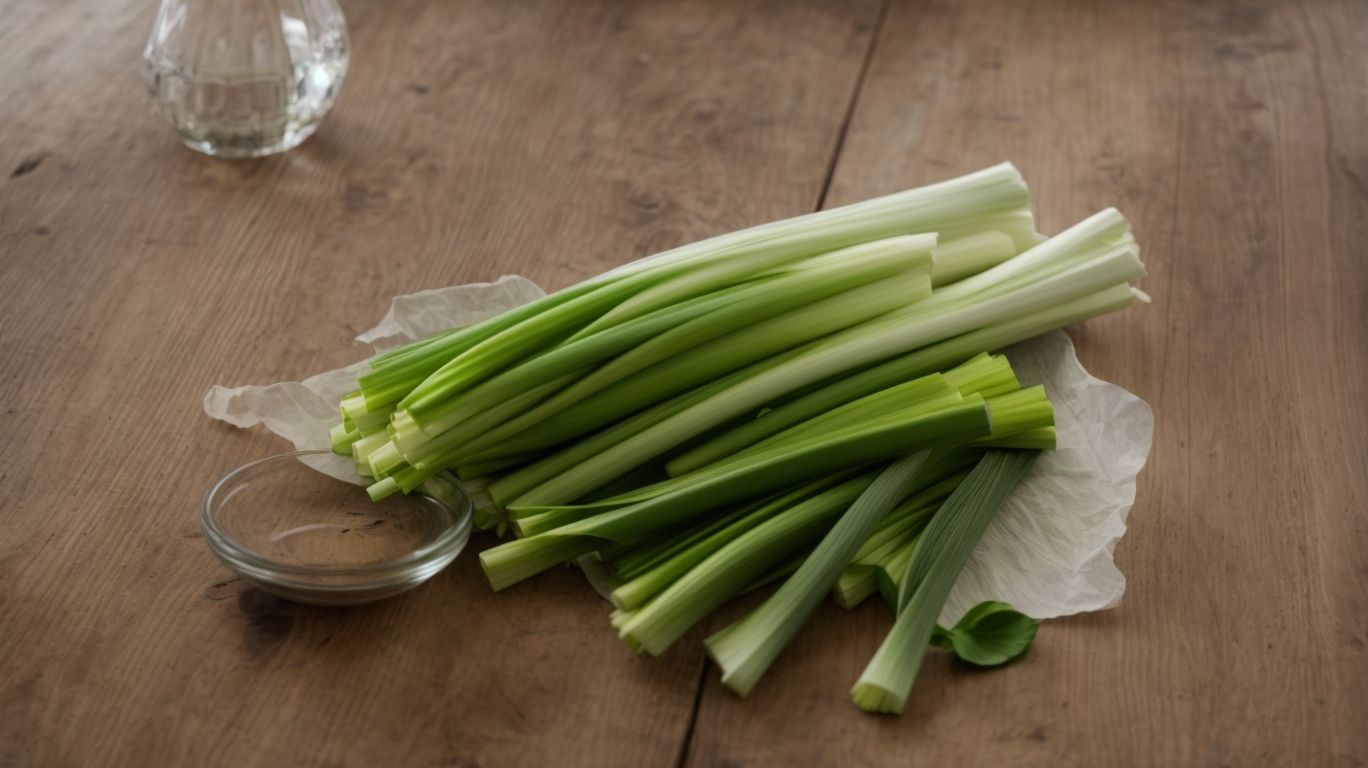
Credits: Poormet.Com – Joe Adams
Leeks are versatile vegetables belonging to the onion family, known for their unique flavor and culinary uses.
Characterized by a mild and slightly sweet taste, leeks add a delicate yet distinct flavor to dishes. Their aromatic nature makes them a popular ingredient in soups, stews, and casseroles, enhancing the overall taste without overpowering other ingredients.
These long, slender veggies are made up of tightly packed layers that can hold dirt and debris, requiring thorough cleaning before use. Leeks come in different varieties, including the dark green sturdy leaves and the tender white stalks, each offering a different texture and flavor.
Popular in French cuisine, leeks are often used in dishes like vichyssoise and quiche. They also play a significant role in traditional Scottish recipes, such as cock-a-leekie soup and tatties and neeps, showcasing their versatility across cultures.
What is the Nutritional Value of Leeks?
Leeks are a rich source of essential nutrients such as vitamins, minerals, and other key elements beneficial to overall health.
One noteworthy aspect of leeks is their high vitamin content. They are particularly rich in vitamin K, a crucial nutrient for blood clotting and bone health. Leeks provide a good amount of vitamin A, which supports vision and immune function. Regarding minerals, leeks contain significant levels of iron and manganese, important for energy production and antioxidant defense.
The health benefits of consuming leeks extend beyond their nutritional composition. Leeks are known for their potential to lower cholesterol, aid in digestion, and promote heart health. Their fiber content supports digestive regularity, while their antioxidants help reduce inflammation and protect cells from damage.
Incorporating leeks into a balanced diet can enhance overall well-being by providing a diverse array of nutrients that support various bodily functions. Whether eaten raw in salads or added to soups and stir-fries, leeks offer a flavorful and nutritious addition to meals that can contribute to better health outcomes.
How to Select and Store Leeks?
Selecting and storing leeks correctly is crucial to preserving their freshness and flavor for optimal culinary results.
When choosing fresh leeks at the store, look for ones with crisp, firm stalks and dark green leaves. Avoid leeks with wilted or yellowing leaves, as this indicates they are past their prime. Opt for leeks that have a white base with a slight bulb, as this signifies tenderness and freshness.
To store leeks, wrap them loosely in a damp paper towel and place them in a perforated plastic bag in the refrigerator crisper drawer. Alternatively, you can trim the roots and store them upright in a glass of water, changing the water every few days.
When preparing leeks for cooking, trim off the dark green tops and the root end. Slice the leeks vertically and rinse them thoroughly under cold water to remove any dirt or sand trapped between the layers. Leeks are delicious when sautéed, roasted, or added to soups and stews.
What to Look for When Buying Leeks?
When buying leeks, it is essential to look for firm, white stalks and vibrant green leaves, indicating freshness and quality.
Another visual cue to ensure freshness in leeks is to check for a lack of wilting or yellowing in the leaves, as these are signs of aging. The outer layers of the leek should feel smooth and free from blemishes or soft spots.
Opting for leeks with a consistent diameter along the entire length of the stalk is also a good indicator of quality. This uniformity suggests even growth and proper care during cultivation.
Choosing fresh leeks not only enhances the visual appeal of your dishes but also contributes significantly to the overall flavor profile. The delicate sweetness and subtle onion-like taste of fresh leeks can elevate the taste of soups, stews, and various other culinary creations.
How to Properly Store Leeks?
Properly storing leeks involves refrigerating them in a perforated plastic bag or container to maintain their crispness and flavor. Leeks can also be frozen for longer-term storage.
When refrigerating leeks, it is crucial to keep them away from moisture. To achieve this, place the leeks in a perforated plastic bag or container lined with a paper towel to absorb excess moisture.
Make sure to store them in the crisper drawer of the refrigerator, where the temperature is slightly higher than the rest of the fridge, ideally around 32°F to 35°F (0°C to 2°C).
Regarding freezing leeks, start by thoroughly cleaning and cutting them into desired sizes. Then blanch the leeks for 2-3 minutes, followed by an immediate ice water bath to stop the cooking process and retain their color.
After blanching, pat the leeks dry and spread them out in a single layer on a baking sheet. Once frozen solid, transfer the leeks into an airtight container or freezer bag, removing as much air as possible to prevent freezer burn.
When ready to use the frozen leeks, simply add them directly to your dish during cooking, without the need to thaw. This ensures that they maintain their texture and flavor, adding a burst of freshness to your recipes.
Preparing Leeks for Cooking
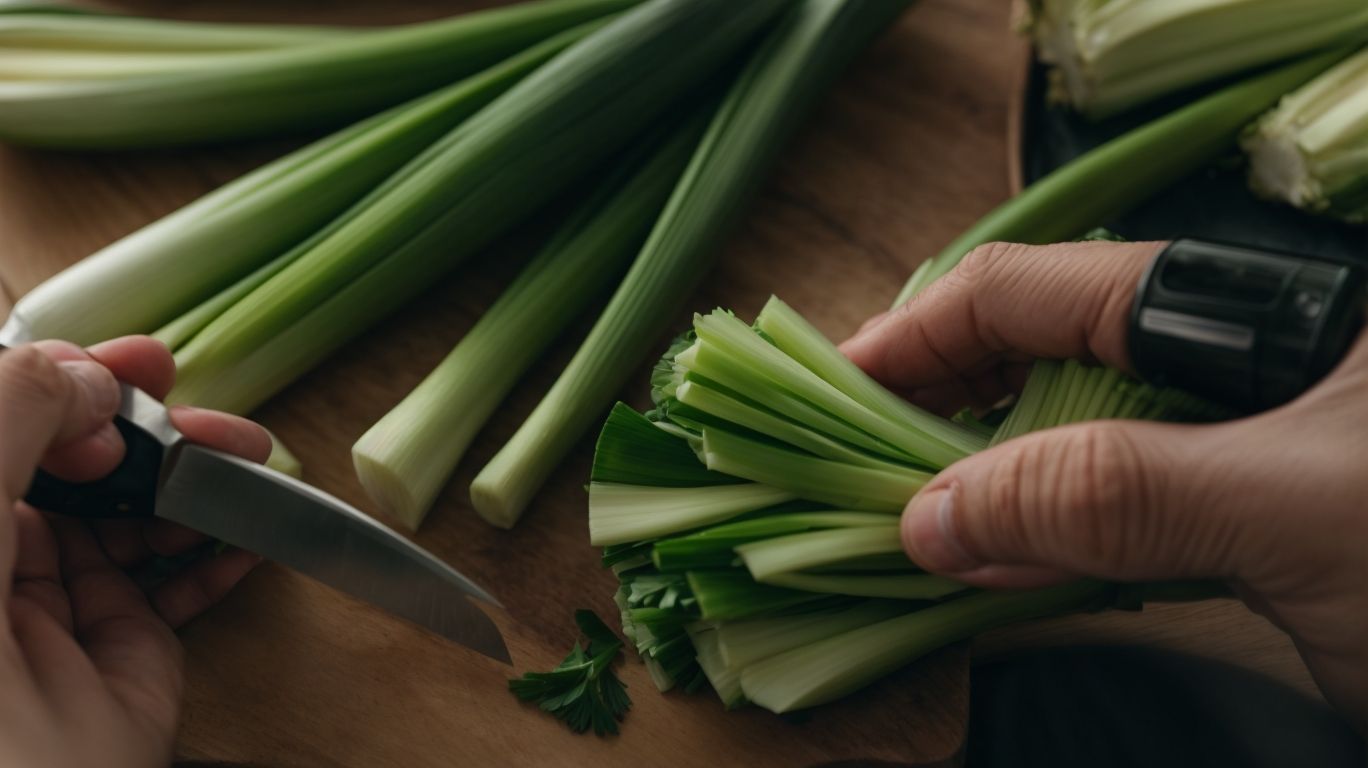
Credits: Poormet.Com – Bobby Anderson
Properly preparing leeks for cooking involves thorough cleaning, slicing, and chopping to utilize their unique flavor and texture in various dishes.
To start the cleaning process, first, trim off the root end and the dark green tops of the leek. Slice the leek vertically, and rinse each layer under running water to remove any trapped dirt or grit. For slicing, you can cut the leeks into rings or julienne strips, depending on the recipe. Chopping them finely is ideal for soups or casseroles, while leaving them in longer strips can add extra texture to stir-fries.
Proper preparation is crucial as it not only enhances the flavor of leeks but also ensures a delightful dining experience when using this versatile vegetable.
How to Clean Leeks?
Cleaning leeks is an essential step before cooking to remove any dirt or debris trapped between the layers of the stalks.
-
The first and foremost important step in cleaning leeks is to begin by trimming off the root end and any dark green parts at the top of the leaves, leaving the tender white and light green parts.
-
After trimming, slice vertically down the leek, cutting it in half or quarters lengthwise without completely separating the layers to ensure thorough cleaning. Place the cut leeks in a bowl of cold water and gently agitate them to dislodge any dirt or sand; the dirt tends to settle at the bottom of the bowl.
-
For optimal cleanliness, repeat this process until the water remains clear and free from any debris. Once clean, dry the leeks thoroughly with a paper towel or kitchen cloth before proceeding to use them in your favorite recipes.
How to Cut Leeks?
Cutting leeks involves slicing them lengthwise and then chopping them into desired sizes, ensuring uniform pieces for even cooking.
A crucial step in cutting leeks is to rinse them thoroughly after slicing lengthwise. This helps remove any dirt or sand trapped between the layers, ensuring a clean final product.
Consistent cuts are essential for uniform cooking results in various dishes. Whether you’re sautéing leeks for a soup base or adding them to a stir-fry, evenly sized pieces ensure that they cook at the same rate, resulting in a harmonious blend of flavors.
How to Cook Leeks?
Cooking leeks offers the opportunity to explore different methods such as sautéing, grilling, or roasting, each enhancing the unique flavor of these versatile vegetables.
When sautéing leeks in butter, their mild sweetness softens and creates a flavorful base for risottos or pasta dishes. On the other hand, grilling leeks imparts a delightful smoky taste, perfect for adding depth to salads or alongside grilled meats. Roasting leeks brings out their natural sugars, resulting in a caramelized richness that complements roasted chicken or pork tenderloin beautifully.
One popular recipe is to sauté leeks with garlic and thyme, then mix them into creamy mashed potatoes for an elevated side dish. For a light and refreshing option, grill leeks until charred and toss them with olive oil, lemon juice, and feta cheese. When roasting leeks, try combining them with carrots and parsnips for a delicious medley of roasted root vegetables.
Recipes Using Leeks
Explore a variety of delicious recipes using leeks, from creamy soups to savory quiches, showcasing the versatility of this flavorful vegetable.
Leeks, with their mild onion-like flavor, make a fantastic addition to many dishes. One classic recipe that features leeks as a primary ingredient is leek and potato soup. This comforting soup is simple yet satisfying, blending the subtle sweetness of leeks with creamy potatoes.
Another popular dish is a savory leek and mushroom quiche, where the leeks add a delicious depth of flavor to the custardy filling. For a quick and flavorful option, try a leek and chicken stir-fry that combines tender leeks with succulent chicken and a tasty Asian-inspired sauce.
Creamy Leek and Potato Soup
Indulge in a comforting bowl of creamy leek and potato soup, where the buttery sweetness of leeks shines through in every spoonful.
This easy-to-make soup is a perfect blend of tender leeks, creamy potatoes, and savory broth that create a rich and velvety texture.
To prepare this comforting dish, start by sautéing finely chopped leeks in a generous amount of butter until they are soft and fragrant.
Adding the potatoes next and allowing them to cook in the flavorful leek-infused butter helps develop a depth of taste that truly elevates this classic dish.
After simmering until the potatoes are tender, puree the mixture to achieve a smooth and luxurious consistency.
Serve this soup hot, garnished with a dollop of sour cream or a sprinkle of fresh chives for a touch of freshness that complements the creamy leeks beautifully.
Leek and Mushroom Quiche
Savor the delectable combination of leeks and mushrooms in a flavorful quiche that makes for a perfect brunch or light dinner option.
The earthy sweetness of leeks and the rich umami flavor of mushrooms come together harmoniously in this dish. To prepare this scrumptious quiche, begin by sautéing sliced leeks and mushrooms in butter until they are soft and caramelized. Then, whisk together eggs, cream, and Gruyère cheese in a bowl to create a creamy custard base. Pour the mixture over the leeks and mushrooms in a pre-baked pie crust, and bake until the quiche is set and golden brown.
Leek and Chicken Stir-fry
Whip up a quick and delicious leek and chicken stir-fry, where the crisp texture of leeks complements the tender chicken pieces in a flavorful dish.
This easy-to-make dish offers a perfect marriage of savory and slightly sweet elements, creating a delectable combination. To elevate the flavors, consider marinating the chicken beforehand in a mixture of soy sauce, garlic, and ginger for added depth. For those seeking a healthier alternative, you can use skinless chicken breast and opt for a light stir-fry method with minimal oil. Mixing in colorful bell peppers or water chestnuts can bring extra crunch and vibrancy to the dish, appealing to both the eyes and the taste buds.
Tips and Tricks for Cooking with Leeks
Master the art of cooking with leeks using expert tips and tricks to elevate the flavor and uniqueness of your dishes.
Leeks, with their mild onion-like flavor and versatile nature, can truly transform a dish when prepared thoughtfully. To prevent burning, ensure you cook them over medium heat and stir frequently to evenly caramelize their sugars without scorching. To enhance their flavor, consider pairing leeks with ingredients like garlic, thyme, or lemon zest to bring out their natural sweetness and depth.
Exploring unique culinary applications, try using leeks in unconventional ways such as grilling them alongside steak for a smoky twist or incorporating them into creamy soups for added texture and aroma. For an innovative cooking method, experiment with pickling leeks to create tangy and crunchy garnishes that elevate salads or sandwiches.
How to Prevent Leeks from Burning?
Preventing leeks from burning during cooking involves controlling the heat and ensuring even sautéing on the stovetop to preserve their delicate flavor.
One essential tip is to cook leeks over medium-low heat to prevent them from charring too quickly. By regulating the temperature, you allow the flavors to develop gradually without scorching.
Another strategy is to slice the leeks evenly to ensure uniform cooking. This helps in maintaining a consistent texture and flavor throughout the dish.
Periodically stirring the leeks while sautéing can prevent them from sticking to the pan and burning. This technique promotes even browning and caramelization, enhancing the overall taste of the dish.
How to Enhance the Flavor of Leeks?
Enhancing the natural flavor of leeks can be achieved by using complementary ingredients and seasonings that accentuate their unique taste profile.
For example, combining leeks with mushrooms creates a rich umami flavor, while pairing them with garlic adds a savory kick. Thyme and rosemary are herbs that bring out the earthy sweetness of leeks, making them ideal for slow-cooked dishes. Using citrus zest can provide a bright and refreshing contrast to the mild onion flavor of leeks. When cooking leeks, sautéing them in butter brings out their natural sweetness, while roasting them with olive oil caramelizes their edges for a crispy texture.
How to Use Leeks in Different Types of Cuisine?
Discover the culinary versatility of leeks by exploring how they can be used in various cuisines, from roasted leeks in Mediterranean dishes to sautéed leeks in Asian stir-fries.
Leeks are a staple in French cuisine, commonly found in soups like vichyssoise and quiches. Their mild onion flavor adds depth to dishes without overpowering other ingredients. In Middle Eastern cooking, leeks are often braised with lamb or incorporated into savory pies. Their long, slender shape makes them ideal for grilling or charbroiling, bringing out a unique smoky sweetness. In Indian cuisine, leeks can be used in curries or mixed with spices for a flavorful side dish.
Conclusion
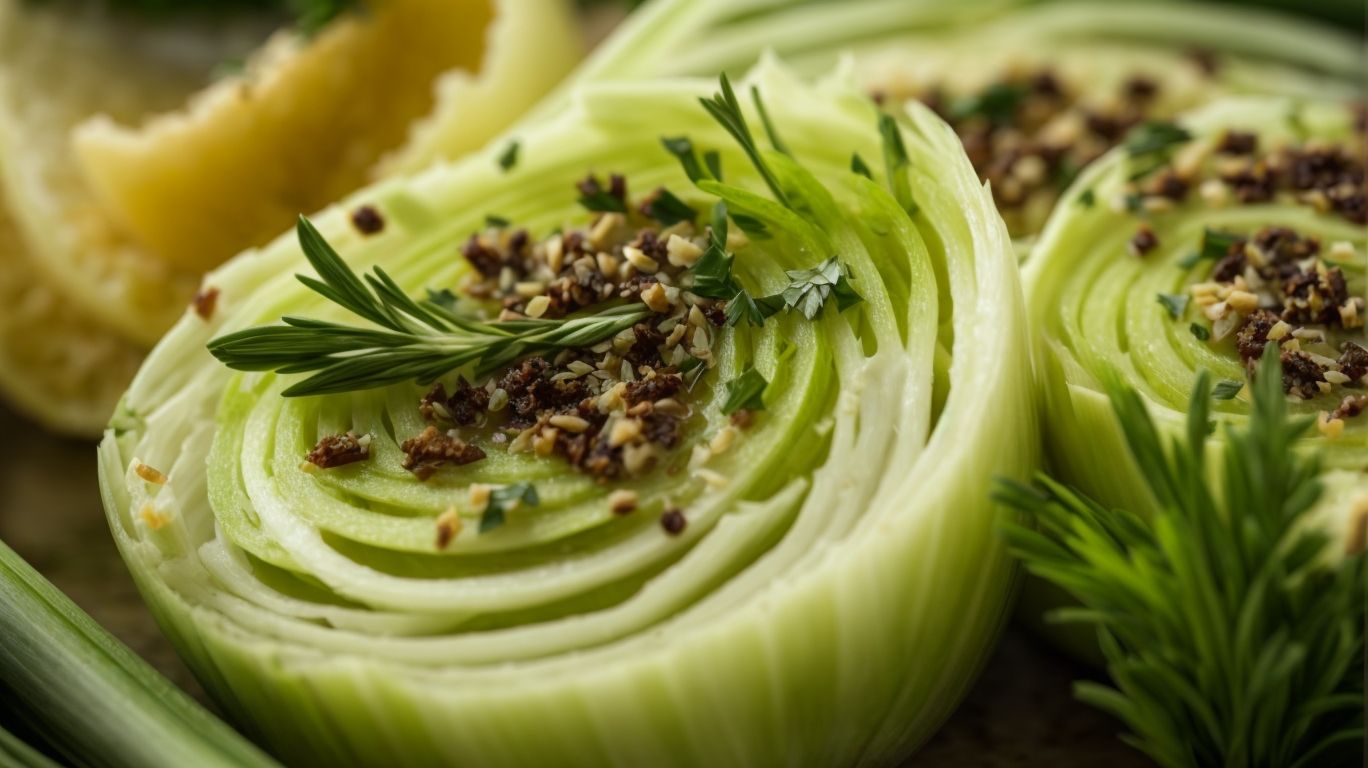
Credits: Poormet.Com – Bobby Mitchell
In conclusion, leeks stand out as a versatile and flavorful vegetable that adds a unique touch to various cuisines, making them a valuable ingredient in culinary creations.
These long, green stalks are part of the allium family, which includes onions and garlic. Known for their mild onion-like flavor, leeks are often used to add depth and complexity to dishes without overpowering other ingredients. Their tender texture and subtle taste make them perfect for soups, stews, stir-fries, and even as a garnish.
Not only do they enhance the taste of dishes, but leeks also offer a range of nutritional benefits. They are low in calories, rich in vitamins A and K, and a good source of fiber. This combination of flavor and nutrition makes them a versatile option for health-conscious cooks looking to elevate their recipes.
Whether they are sautéed, braised, roasted, or used raw in salads, leeks bring a depth of flavor that adds dimension to any dish. From classic potato leek soup to modern dishes like leek risotto or leek tart, the possibilities are endless when incorporating this versatile vegetable.
So, next time you’re in the kitchen, don’t underestimate the power of leeks in creating delicious and innovative dishes that will impress your family and friends.
Frequently Asked Questions
How to Cook Leeks?
What is the best way to cook leeks?
The best way to cook leeks is to sauté them in a pan with a bit of butter or oil until they are soft and slightly caramelized.
How to Cook Leeks?
Can you cook leeks in the oven?
Absolutely! Leeks can be roasted in the oven for a delicious and easy side dish. Simply coat them in oil, salt, and pepper, and bake at 375°F for about 20 minutes.
How to Cook Leeks?
Are leeks safe to eat raw?
Yes, leeks are safe to eat raw, but they may be tough and fibrous. For a more tender and flavorful result, it is best to cook them in some way.
How to Cook Leeks?
What is the best way to clean leeks before cooking?
Leeks can be very dirty, so it is important to clean them thoroughly. Cut off the dark green tops and root ends, then slice the leeks lengthwise and rinse under cold water, separating the layers to remove any dirt or sand.
How to Cook Leeks?
Can you freeze cooked leeks?
Yes, you can freeze cooked leeks for up to 3 months. Just make sure to cool them completely before storing them in an airtight container or freezer bag.
How to Cook Leeks?
How do you use leeks in cooking?
Leeks can be used in a variety of dishes, such as soups, stews, stir-fries, and even as a side dish. They add a subtle onion-like flavor and can be cooked in a similar way to onions.

